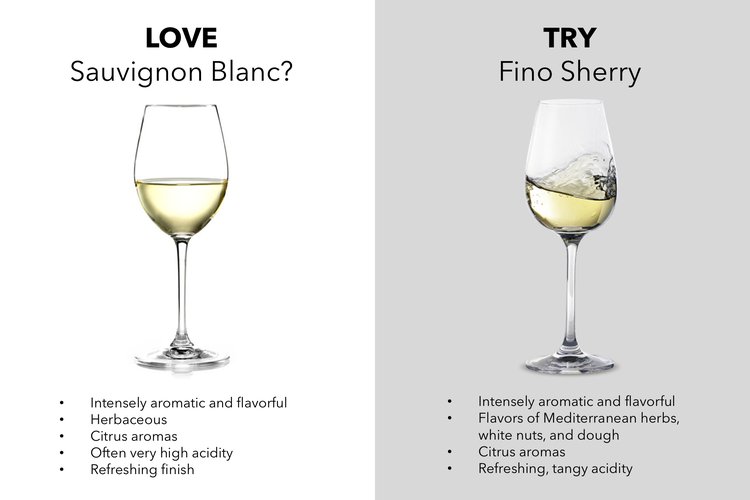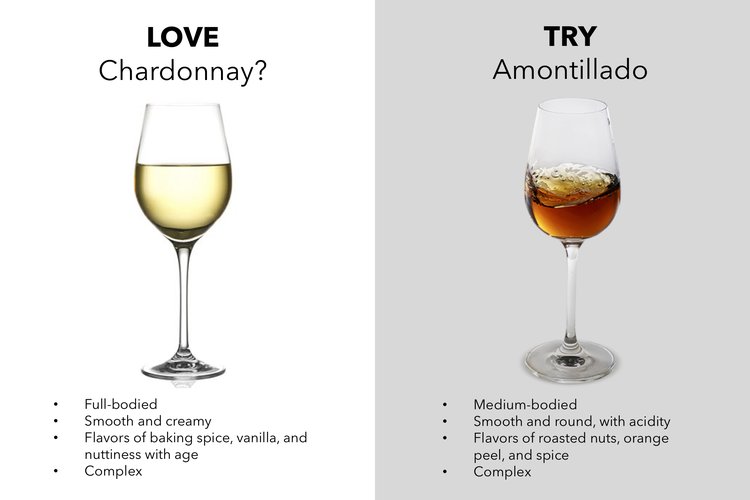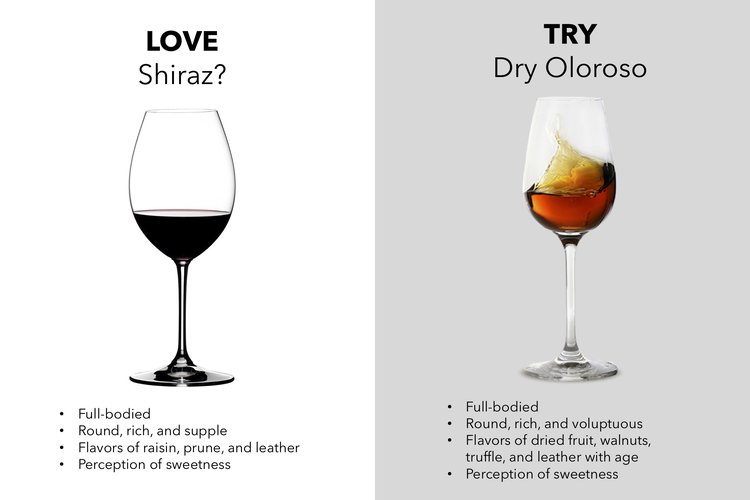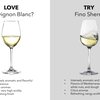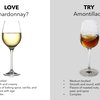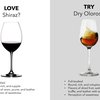Most of us in the wine education world refer to ourselves as certified wine geeks. And as such we all have our individual, personal stories of how and when we fell in love with wine. This of course includes our love affair with Sherry. Even though it kills me to admit, I did not really care for the flavor profile of Fino Sherry the first time I was exposed. Much easier to admit, today I simply love the stuff. After a long day’s work in the dead of summer here in Chicago, I love to unwind with a cool glass of Fino. Snacking on an accompaniment of olives and almonds, my Fino is easily carried on to a light dinner of salad and fish.
Perhaps I didn’t enjoy Sherry then as I do now because I didn’t have enough experience. Sherry was arcane to me, and I didn’t quite know where to place it in the pantheon of wines I was learning about when I got started. I wish I had some sort of guide that utilized wines already familiar to me and related them to the styles of sherry of which I was not. This would surely help me understand what I might enjoy, linking this new information into my ever-growing background knowledge of wine.
First, a few sherry basics for the uninitiated. The style of Sherry is a direct result of the way in which it’s aged. This is similar to the division of styles within the sparkling wine category. Champagne is made in one way, Prosecco is another. Both sparkling wines by definition but show dramatic differences in flavor and aroma. You can begin to divide sherry into two camps: sherry that is aged biologically and sherry that is aged oxidatively. Ageing ‘biologically’ means under a protective layer of magical yeast called ‘flor’. This layer of yeast does not allow oxygen to touch the wine creating a style that is pale, light bodied, pungently aromatic, with aromas of citrus and dough. Fino and Manzanilla Sherry are aged this way. Oloroso Sherry is aged oxidatively, so it does not see contact with flor. Instead Oloroso lovingly welcomes oxygen to create a style that is brown in color, round, rich, with aromas of toffee, kernel, and walnuts.
Sherry has strong personality offering flavors unique only to itself. That’s why it is so special.
With the helping hand of already familiar wine, it’s possible to find similarities that could direct you to a Sherry you’ll enjoy. Remember, it’s not a guarantee you’ll like it all! You can use this exercise with other categories as well by asking a few questions. How can I relate these wines in terms of aromatic intensity and weight? Are there any similar flavor profiles? Are these wines structurally comparable?
Here are a few to get started:
If you like dry New Zealand Sauvignon Blanc, you may like Fino Sherry. Both of these wines are intensely aromatic and flavorful, thus demanding intensely flavored foods to stand up to them. Sauvignon Blanc offers herbaceous, citrus aromas often with very high acidity and a refreshing finish. Chilled Fino, as I should be served, is light bodied and refreshing like Sauvignon Blanc and stimulates the taste buds with its tangy acidity. Fino has an aromatic profile of white nuts, Mediterranean herbs, and fresh dough. Here we’ve matched weight, intensity, and structure. Note you won’t find any fresh dough aromas in Sauvignon Blanc!
If you like oaked Chardonnay, you may like Amontillado. Most people are familiar with ‘Cali’ style Chardonnay. Grapes sourced from California’s warm and sunny climate mean the wines are full bodied and show flavors or ripe peach and tropical fruit. Fermentation and maturation in oak give Chardonnay weight and depth, offering flavors of baking spice, vanilla, and a nuttiness with age. The best examples are balanced by moderate acidity and minerality. Amontillado, aged partially under the protective layer of flor for a few years then oxidatively for a few more, offers a similar structure. Smooth, round yet medium-bodied Amontillado can show hints of its exposure to flor. Amontillado’s aromatic profile of lightly roasted nuts, orange peel, and spice can be quite complex. This same level of complexity can be found in a Chardonnay exposed to all the ‘Burgundian’ treatments. Confidently pair both wines with roasted chicken, duck, or pork with winter vegetables.
If you like Australian Shiraz, you may like Oloroso. Oloroso is the most generous of the dry Sherries. It boasts the fullest body of the dry styles with a mouthfeel that is often described as voluptuous. The high alcohol content will even give a perception of sweetness. With aromatic, oxidative aromas of dried fruit and walnut that develop into truffle and leather with further ageing. Australian Shiraz shares many of these same characteristics. It’s full bodied, round, rich and supple. The fruitiness gives a perception of sweetness and you’ll often find pronounced aromas of raisin, prune, and leather. In terms of food pairing, both are often served alongside red meat, game, and hearty soups or stews.
This list is not in any way exhaustive. Being open and observant to similarities across categories in wine will help you discover new wines to enjoy. You’ll also form connections within the vast world of wine, making it just a little bit smaller, a little bit simpler, one sip at a time.
